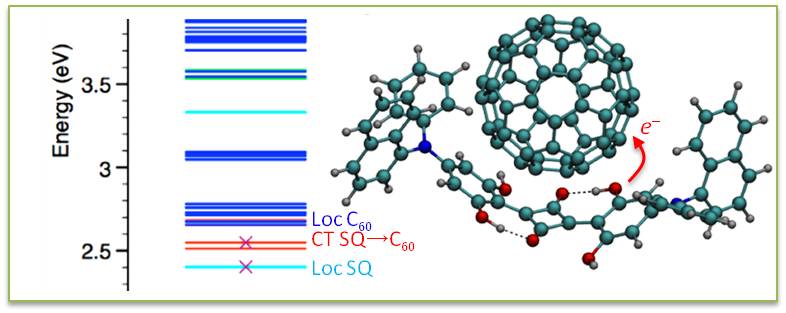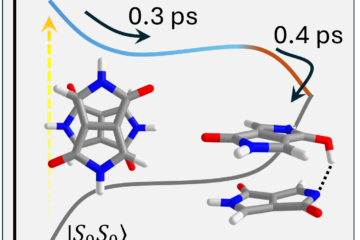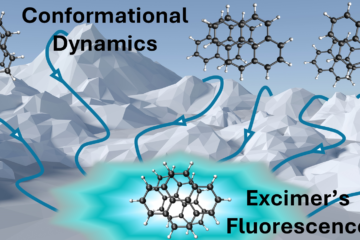Squaraine-fullerene complexes show a non-Marcus regime.
In a recent publication [1], we looked at the electronic structure of squaraine dies and squaraine-fullerene complexes. These complexes are good candidates to organic photovoltaics.
As we show out in the paper, these complexes feature charge-transfer states near the bottom of the excited state band, which contributes to increase charge separation processes driving photovotaics.
We found out that the experimental open-circuit voltage correlates with the energy of the lowest charge-transfer state and anti-correlates with the energy of the lowest excited state. This behavior may show that the charge recombination in such complexes may follow a non-Marcus regime.
Reference
[1] K. Sen, R. Crespo-Otero, W. Thiel, M. Barbatti, Electronic structure of fullerene-squaraine complexes for photovoltaic devices; Chem. Theor. Chem., doi:10.1016/j.comptc.2014.02.024 (2014).
doi:10.1016/j.comptc.2014.02.024



